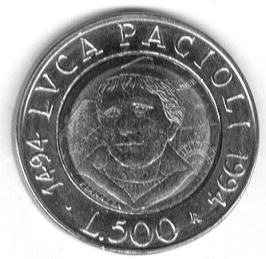Contra
Divinam Proportionem
Marco Frascari
Virginia Tech, USA
Livio Volpi
Ghirardini
Mantua, ITALY
 "Are
architectural proportions metric, numeric, geometric or golden?
Which ones among the many in a building are the markers that should
be considered reference points for the proportioning of its parts?
A golden or divine magnifying glass that distorts rather than
clarifies has been applied to everything in the name of aesthetic
and mystical impulses. A proportion called the Golden Mean
has long been the only explanation for a successive melange of
proportions in all the visual arts. This Golden Mean (also called
the Divine Proportion) has been found repeatedly in the pictures
of growth patterns embodied in natural events or in the pictures
of human products. Since the last century it has so fascinated
mathematicians and artists that is is proposed by many as the
absolute aesthetic value.
"Are
architectural proportions metric, numeric, geometric or golden?
Which ones among the many in a building are the markers that should
be considered reference points for the proportioning of its parts?
A golden or divine magnifying glass that distorts rather than
clarifies has been applied to everything in the name of aesthetic
and mystical impulses. A proportion called the Golden Mean
has long been the only explanation for a successive melange of
proportions in all the visual arts. This Golden Mean (also called
the Divine Proportion) has been found repeatedly in the pictures
of growth patterns embodied in natural events or in the pictures
of human products. Since the last century it has so fascinated
mathematicians and artists that is is proposed by many as the
absolute aesthetic value.
By tracing lines onto pictures,
this ideal proportion has been found in man-made artifacts and
used to mark human achievements. As the acme of his mystically
scientific process, pictures of the Parthenon with Golden sections
traced on them have been exhibited as demonstrations of the beauty
of its man-made, but nature-inspired, rational design. This graphic
notion of beauty is so alluring and pervasive that it has been
acritically forced upon us as an aesthetic paradigm since grade
school.
The German, Apollonian search
within the combined sciences of mathematics, philosophy and archaeology
lies at the root of the scientific proposal of the Golden Mean
as a panacea for explaining the composition of parts and foretelling
the aesthetic future of man-made designs. German philosopher Adolf
Zeising has made the Golden Mean the only possible principle of
a scientific aesthetic and used the Parthenon with the usual diagram
traced on it to provide the necessary archaeological authority
for his theory of the omnipresence of the aesthetic guarantor
phi. In 1876, in a ponderous article published in memory
of Zeising, mathematician Siegmund Gunter reviewed Zeising's scientific
aesthetics in a critical manner, but even he admitted that the
presence of phi in ancient architecture, and notably in
the Parthenon, was clear evidence of its being the powerful quintessence
of classical aesthetic values. Without any doubt Zeising and Gunter
were very skillful at measuring pictures, but it is clear that
neither of them had ever measured a building following to tectonic
principles."
Order the book Nexus II: Architecture
and Mathematics
| abstract
index | previous | next
| NNJ homepage | e-mail
Marco Frascari | e-mail Livio
Volpi Ghirardini | top of page
 "Are
architectural proportions metric, numeric, geometric or golden?
Which ones among the many in a building are the markers that should
be considered reference points for the proportioning of its parts?
A golden or divine magnifying glass that distorts rather than
clarifies has been applied to everything in the name of aesthetic
and mystical impulses. A proportion called the Golden Mean
has long been the only explanation for a successive melange of
proportions in all the visual arts. This Golden Mean (also called
the Divine Proportion) has been found repeatedly in the pictures
of growth patterns embodied in natural events or in the pictures
of human products. Since the last century it has so fascinated
mathematicians and artists that is is proposed by many as the
absolute aesthetic value.
"Are
architectural proportions metric, numeric, geometric or golden?
Which ones among the many in a building are the markers that should
be considered reference points for the proportioning of its parts?
A golden or divine magnifying glass that distorts rather than
clarifies has been applied to everything in the name of aesthetic
and mystical impulses. A proportion called the Golden Mean
has long been the only explanation for a successive melange of
proportions in all the visual arts. This Golden Mean (also called
the Divine Proportion) has been found repeatedly in the pictures
of growth patterns embodied in natural events or in the pictures
of human products. Since the last century it has so fascinated
mathematicians and artists that is is proposed by many as the
absolute aesthetic value.